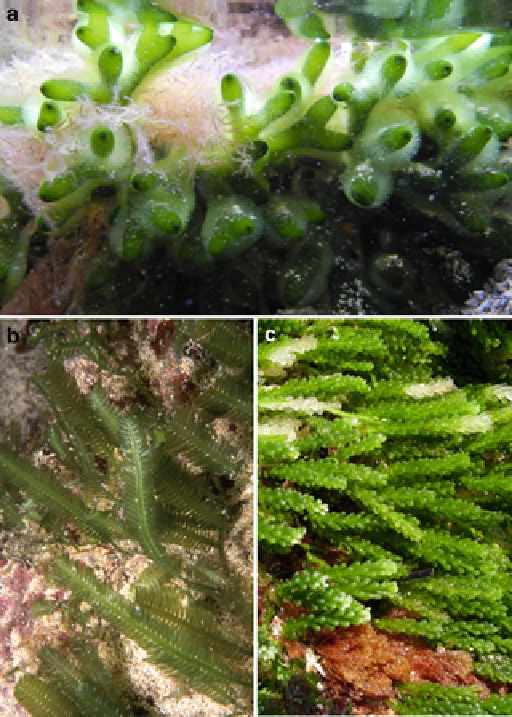Biology Reference
In-Depth Information
Fig. 12.4
(
a
)
Codium fragile
subsp. tomentosoides (van Goor) P.C.Silva (Algaebase; image Ref.
17373, photo by Mike Guiry); (
b
)
Caulerpa taxifolia
(photo by John Huisman); (
c
)
C. racemosa
var. cylindracea (Sonder) Verlaque, Huisman and Boudouresque (photo by John Huisman)
habitats (e.g., Gab-Alla
2007
). The widespread tropical/subtropical seaweed
Caulerpa taxifolia
(Fig.
12.4b
), native to the Atlantic, Indian, and Pacific Oceans,
was the first seaweed invasion to draw widespread public attention after its intro-
duction to the Mediterranean Sea in the 1980s, its fast spread, and well-documented
negative ecological impacts (reviewed in Schaffelke and Hewitt
2007
).
Nuclear molecular phylogenies inferred from sequences of the rDNA-ITS1
2
region (ribosomal DNA—internal transcribed spacer 1 and 2) from hundreds
of
Caulerpa
individuals collected worldwide were used to delineate species,
“varieties,” and “strains” of problematic morphological identification. The global
phylogenetic reconstruction contributed to the identification of the invasive “aquar-
ium strain” of Australian origin of
C. taxifolia
, which has been introduced at
þ

